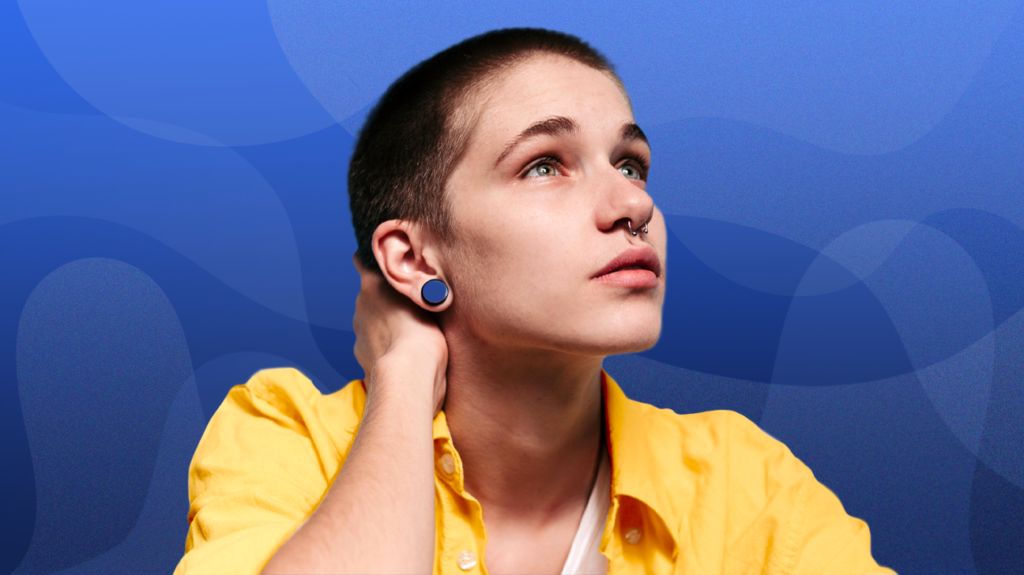Just as LGBTQIA+ is ever expanding, so is the community the “A” represents.
In the LGBTQIA+ community, words and terms matter, as they represent a community of people of many genders and sexualities.
The LGBT acronym has grown as the community continues to grow. It went from LGBT to LGBTQ and now, many use LGBTQIA+.
Depending on whom you ask, the A can have different meanings. For some, it stands for asexual or aromantic, while for others it may stand for much more.
Here’s a closer look at what this acronym can represent.
The category included in the “A” of LGBTQIA can be an umbrella for a lot of identities outside the well-known LGBT. It may surprise many to learn of these lesser-known distinctions.
Here’s a breakdown:
| Terms under the “A” | Definition |
|---|---|
| Asexual or ace(s) | Someone who doesn’t experience sexual attraction, but may have romantic attractions. |
| Aromantic or aro(s) | Someone who doesn’t experience romantic attraction or urges, but may or may not feel sexual attractions. |
| Aceflux/aroflux | Someone whose bandwidth for sexual or romantic attraction waxes and wanes. |
| Akiosexual/akioromantic | Someone with whom unrequited sexual or romantic attraction is preferred (i.e., if the object of your attraction doesn’t feel the same, your attraction grows). |
| Demisexual/ demiromantic | Someone who feels sexual or romantic attraction to others they already have close relationships with. |
| Graysexual/ grayromantic | Someone who rarely has sexual or romantic attraction, or only under particular circumstances. |
| Reciprosexual/ recipromantic | Someone who has sexual or romantic attractions after another person initiates. |
In addition to these identities, there are distinctions in attraction type and overall concepts.
According to the most recently published Ace Community 2017 and 2018 survey:
- Almost 66% of respondents identified as pure asexual, 10% as demisexual, 12% as graysexual, and nearly 11% as questioning asexual.
- Of those on the ace spectrum, 16% most closely identified as bisexual (if not ace), around 11% as gay or lesbian, 14% as pansexual, and 16% as straight.
- Nearly 62% of aces identified as female and roughly 13% as male.
- Most of the self-reported aces were around 20 years old; less than 2% were between 30 and 40 years old.
- More than 75% said they were white, 5% reported being Asian or Pacific Islander, more than 3% identified as Hispanic, and almost 5% said they were mixed.
- About 18% said they were Christian or Catholic, and around 26% said they were atheist. More than 40% said they were Jewish.
Michael Paramo — creator of AZE journal (originally known as The Asexual) and moderator for the Facebook group The Ace and Aro Advocacy Project — is a digital artist and researcher who identifies as homoromantic and asexual.
Paramo looks at asexuality as not necessarily choosing to abstain from sex or successfully skirting temptation, but notes that “temptations” might lie elsewhere.
Paramo says a life free from focusing on sexual behaviors can be liberating.
“[People] kind of equate asexuality to like some sort of miserable existence because you’re without sex, and people see sex is like the ultimate enjoyment,” Paramo says.
“I have thought about the fact that sometimes sex can be like a distraction,” Paramo adds. “It’s something that I don’t have to deal with.” That untapped energy and spectrum of emotion goes instead into Paramo’s artwork.
Jane, a woman exploring asexuality, agrees. “At my best — when money is good, I’m in good health, and I’m traveling — sexual attraction never crosses my mind.”
“A lot [of] my contentedness in living without a desire for a partner has to do with living purposefully; tangibly benefitting from altruism,” she adds.
She mentions a long history of organizing and planning benefits and volunteer events.
“I’ve conducted and led workshops for the homeless, veterans, foster children, children with disabilities, and abused women… [The time spent] almost takes the place of where marriage should be,” Jane says.
While not everyone agrees on its meaning, many view the “A” in LGBTQIA+ as a sexual orientation, just like homosexuality, heterosexuality, and bisexuality.
The acronym describes a variety of ways a person might identify.
But remember that each person is different and has a different experience. It’s OK if the “A” means something different for you.
If you want to know more about it, you can check out Ace Week going on right now through October 30. This is an annual week-long event of pride, awareness, and celebration for those who identify as asexuals.
More resources
For more information on aces and aros, you can check out these support hubs and community finders:
- The Trevor Project for more information
- Aces and Aros for finding a local community
